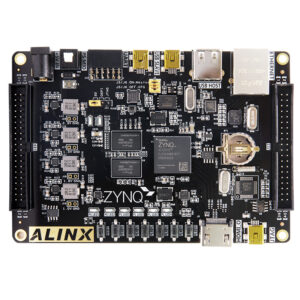At times when we are working with an electronic circuit, we tend to get a fluctuating load or thermal heat than required from input or some intermediary components in the circuit. We need to stabilize the output flow for proper functioning. When a steady, reliable voltage is needed, Voltage Regulators are the go to component.
What can a Voltage Regulator regulate?
A Voltage regulator generates a fixed output voltage that remains constant regardless of changes to its input voltage or load conditions. A Voltage Regulator can regulate both AC and DC current. Some regulators are designed to measure multiple sources of AC and DC current.
Voltage Regulator reduces the incoming voltage to the desired output level and dumps the excess energy as heat.
This is the basic L7805 voltage regulator as shown in figure 1. It is a three-terminal positive regulator (One for input, one for output and the middle one as ground) which has a 5V fixed output voltage. It can output a maximum current of 1.5A.

How It Works?
Voltage Regulators work by gauging the actual voltage output of a device against a reference voltage inside of the device. If there is a difference between the actual voltage and the reference voltage, that difference is amplified and used to reduce voltage errors. The more stable a Voltage Regulator is, the slower it is to respond. This is because of the regulator is either increasing the gain of the input on the device or lowering the gain of the device at the output level. Some regulators will shut down the device they are installed in if the current draw exceeds a certain level.
Is it really necessary to use a Voltage Regulator?
All electrical devices have a Voltage Regulator circuit. The reason for this is that if a device were to lack a Voltage Regulator it would constantly be susceptible to damage from receiving too much voltage or would be underpowered due to a lack of voltage. Voltage Regulators keep electrical devices running efficiently, requiring less maintenance and lasting longer.
Difference between an Adaptor and a Voltage Regulator
Even an Adaptor does the same function as that of a Voltage regulator but the stability at 5V is more accurate in Voltage regulators than Adaptors which may deviate. When working on Microcontrollers, a constant 5V in necessary. Otherwise it might damage the circuit as a whole.
An example of a Voltage Regulator
Below we can a circuit in the figure 2 that consists of a Voltage Regulator, PNP transistor, NPN transistor, 2 lamps and a 12V battery supply. In the first lamp BL1, a 12V supply is given through the PNP transistor as seen in the DC voltmeter displaying 11.9V or approx. 12V. But for the second lamp BL2, a regulated supply of 5V is given by the Voltage regulator. We can see only 4.99V or approx. 5V being given in the DC voltmeter. Thus the lamp BL2 gets only regulated supply of 5V.

Some of the important features are:
They have a Thermal shut down control, Safe area protection, and current limiter. Sometimes the current limiter of the regulator can also benefit other components in the circuit as it can provide protection for the circuit also.
For more information about the product please visit: http://www.tenettech.com/product/1450/voltage-regulator-5v
For technical queries please drop an e-mail: info@tenettech.com







